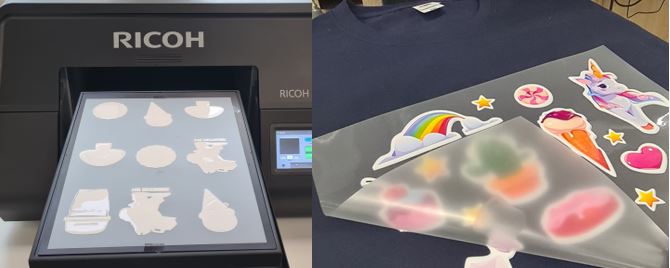
Features
Craft
Opinion
Direct to film growth – meet the five drivers
April 8, 2024 By Axel Stuhlreiter

You can’t have failed to notice how quickly direct to film (DTF) technology has become a key feature of today’s highly demanding digital textile production arena.
The availability of higher volume production DTF technologies opening up market opportunities is just one of the reasons it is making strong gains in the global market for direct to garment (DTG) printing that is predicted to reach nearly US$1.9 billion by 2032.
As well as the impact the latest technology is having on DTF‘s growth, predictions for its continued upward trajectory are being fuelled by these five drivers:
Advertisement
- Quality – The process can be used to produce high quality prints on a variety of surfaces, including dark and light fabrics, non-cotton fabrics, and hard surfaces like metal and ceramics. It can reproduce intricate designs and exceptional images.
- Sustainability – The ability to cost efficiently deliver multiple run lengths enables operations to move towards a more responsive print on demand approach that reduces waste. DTF can also support responsible production processes that achieve Global Organic Textile Standard (GOTS) and Oeko-Tex Standard 100 certifications.
- Flexibility – There are multiple application possibilities, including typically T-shirts, hoodies, sportswear, promotional items, and interior décor. Adoption of the relative newcomer technology will enable print service providers (PSPs) to continue to capitalize on consumer desire for customized products. The Future of Digital Textile Printing to 2026 report from Smithers found more than a third of consumers are interested in personalized products commonly made with textiles. Customers are also happy to pay a premium for their customization. The report forecasts digital printed textile volume will increase significantly up to 2026, reaching 5.531 million square metres annually.
- Speed – DTF is more time efficient than traditional methods of printing on textiles. As a result, it is suitable for creating custom designs for clients on demand. Once the film is printed, it can then be stored and applied quickly when needed.
- Easy technology adoption – Simple to use, plug and play systems mean any PSP looking to explore DTF can implement the technology quickly and effectively.
Axel Stuhlreiter is head of Textile Solutions, Graphic Communications Group, Ricoh Europe
Print this page
Advertisement
Stories continue below
Related
Tags